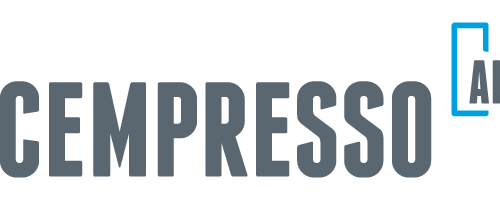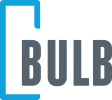
Countless companies in virtually every industry today are looking for streamlined ways to integrate AI into their existing processes and systems. Why? Because AI has the power to streamline your operations, enhance data insights, empower employees, and optimize results.
More than 55% of firms in one study are implementing AI into their business environments in some way. The trouble is, infusing a powerful new technology into your existing ecosystem can be more complex than it seems. There are a lot of moving parts to consider, various risks to overcome, and challenges to address.
As experts in the creation of powerful, customizable tools for infusing AI into business processes, Bulb Technologies is here to help. Here’s your guide to effective AI integration.
How to Integrate AI into Your Business: Step by Step
Implementing any new technology into your organization requires a comprehensive plan. AI is no exception. You’ll need to establish exactly what you want to accomplish with your intelligent tools, which frameworks, and types of AI you want to use and more.
Let’s dive into the step-by-step process.
Step 1: Define Your Project Goals and Use Cases
The first step is defining your goals and objectives. When you choose to integrate AI into your ecosystem, you’re doing it for a purpose. It might be that you want to streamline customer experiences, with intelligent ticket triaging, or self-service bots. Alternatively, you might want to address complex tasks like data analysis with the help of generative AI tools.
The most common applications of AI in business systems include:
- Automating processes: AI tools can help you automate a range of tasks in your organization. They can streamline everything from scheduling your teams based on demand forecast, uploading data to different environments, and summarizing content. They can also automate customer experience tasks, like triaging tickets, emails, and chats.
- Data analysis: One thing AI tools does a lot better than human beings, is process large amounts of data quickly. Our Cempresso Expert Modeler solution even allows you to create tools that can break datasets down into groups and validate data quality.
- Empowering employees: AI isn’t here to replace your team members, but it can augment them. It can help with things like managing common customer service requests, providing step-by-step coaching to team members, or even surfacing data faster during workflows.
Step 2: Start to Invest in AI Skills
With access to solutions like Cempresso AI Agent Studio, your teams can design workflows without extensive coding knowledge or programming skills, using a simple drag-and-drop environment. However, that doesn’t mean that training isn’t valuable.
Training your team members on how to leverage AI effectively, use technology ethically (and in accordance with your compliance guidelines) and avoid risks is crucial. The good news is there are plenty of resources out there you can access for free. For instance, Microsoft has it’s own AI business school service. Of course, it’s also worth creating your own targeted courses.
Once you decide on the AI tools, frameworks, and even LLMs you’re going to implement, gathering documentation you can share with your employees will help to facilitate adoption.
Step 3: Determine the Data Sources You’ll Need to Use
AI in all of its forms relies on data to function effectively. No matter which Large Language Model, or AI framework you’re going to be using, you’ll need to ensure your technology can draw data from the right resources, to train and refine your AI models.
This step requires a little work. You’ll need to start by assessing what kind of data your bots will need to access, based on your use cases. For instance, if you’re designing bots for customer service, you’ll need data from your CRM system, your customer support software, and your business knowledge base. You then need to clean and process your data, to ensure it’s accurate and useful.
Working with data experts during this stage can be useful, particularly when it comes to ensuring the data sources you’re using align with applicable laws, regulations, and policies.
The good news is once you’ve defined the data sources you need, the right AI model builder should allow you to integrate with the resources and tools you want to access instantly. For instance, with Cempresso, you can access a host of easy integrations for all of your existing tech.
Step 4: Select the Right AI Components
Now you have your data, and your use cases in mind, it’s time to think about the core tools you’re going to need to integrate AI into your current systems. First, you’ll need to choose the frameworks or large language models you want to use. Quick tip: with Cempresso AI Agent modeler, you can choose from a range of proprietary and pre-built LLMs, to suit your needs.
You’ll also need to think about which tools you’re going to use to actually design your AI solutions. Obviously, for this stage, we recommend using the Cempresso AI Studio. Our custom-built solution simplifies the creation of agents, chatbots, and chains, with a drag-and-drop interface.
Plus, it comes with pre-built configurable blocks that can adapt to any requirements you might have. You can use this solution to create all kinds of flows, with minimal restrictions. Plus, the system can easily grow, scale, and adapt to suit your changing needs.
Step 5: Allocate Resources
The right technology can make it easier to integrate AI into your ecosystem without a huge amount of initial investment. However, you’ll still need to ensure you’re allocating and using resources effectively. First, you’ll need to decide whether you’re going to create an internal task force for your project, or rely heavily on the support of an AI solution vendor.
The decision will depend on the project’s scope, the complexity of the task, and the level of expertise you need. Next, you’ll need to think about how you’re going to allocate specific resources to your projects, factoring employees, external experts, and budgetary requirements into the mix.
Step 6: Build Your AI Solutions and Flows
The process of actually building your AI solutions and workflows can be either very difficult, or very straightforward, depending on the technology you access. Based on the use cases you’ve identified, start mapping out flows for your AI solutions, thinking carefully about how you can ensure these intelligent solutions can benefit your employees and customers.
Remember, the strategies you use during the building process can vary depending on your existing IT infrastructure. You might prefer to use pre-built blocks and systems if you have limited resources, or you may choose to host and configure everything yourself. Cempresso’s AI Studio allows you to choose between using cloud-based LLMs, and local LLMs, depending on your resources.
Plus, it gives you the backend infrastructure, proxy servers, vector stores, and database solutions you need to start experimenting with AI-powered chains and tools. We recommend starting with a small project, and testing its functionality extensively, before you make any major changes.
Step 7: Begin the Integration Process
Now you have your chains and AI flows, you can begin to integrate them into your existing workflows and systems. If you’re using a solution like Cempresso AI studio, this process should be relatively simple, as our technologies can seamlessly integrate with a range of technologies.
The biggest challenge you’ll face here is adapting your processes and workflows to include AI. Look at the processes you’re going to be changing with artificial intelligence, and start creating new standard operating procedures for your teams.
For instance, if you’re introducing new AI bots into your customer service strategy, you might need to create a new process that looks at how self-service solutions will triage customers, and pass them over to agents when human intervention is needed.
Step 8: Testing and Optimization
Finally, once you integrate AI into your systems and processes, it’s important to ensure you’re monitoring the impact it’s having on your employees, customers, and overall performance. Think about the metrics you can monitor to determine whether your solution is driving results.
For an AI service bot, for instance, you might monitor how many issues your employees handle each day, compared to how many requests are managed by AI. You could look at things like average handling times in the contact center, first-call resolution rates, and customer satisfaction.
It’s also worth gathering feedback from end-users of your AI systems. Ask them what they like and dislike about the solution, and which changes they’d like to implement.
Integrate AI into Your Systems with Bulb Technologies
Learning how to integrate AI into your existing systems and processes can seem complex at first. In the past, the process required a significant amount of technical knowledge, and investment. However, at Bulb Technologies, we’ve designed a simpler way to streamline access to intelligent tech.
With Cempresso AI Studio, any company can create intuitive AI flows and chains, with a range of LLMs, and direct integrations to their existing technologies. Our solution can adapt to any business or industry need, and scale with your organization as you grow.
Contact us today to learn more about the Cempresso AI Studio, and how it’s revolutionizing the process of infusing AI into business processes.
Ready to supercharge your processes with AI?
Let's embark on the journey to unlock the full potential of AI for your organization.



